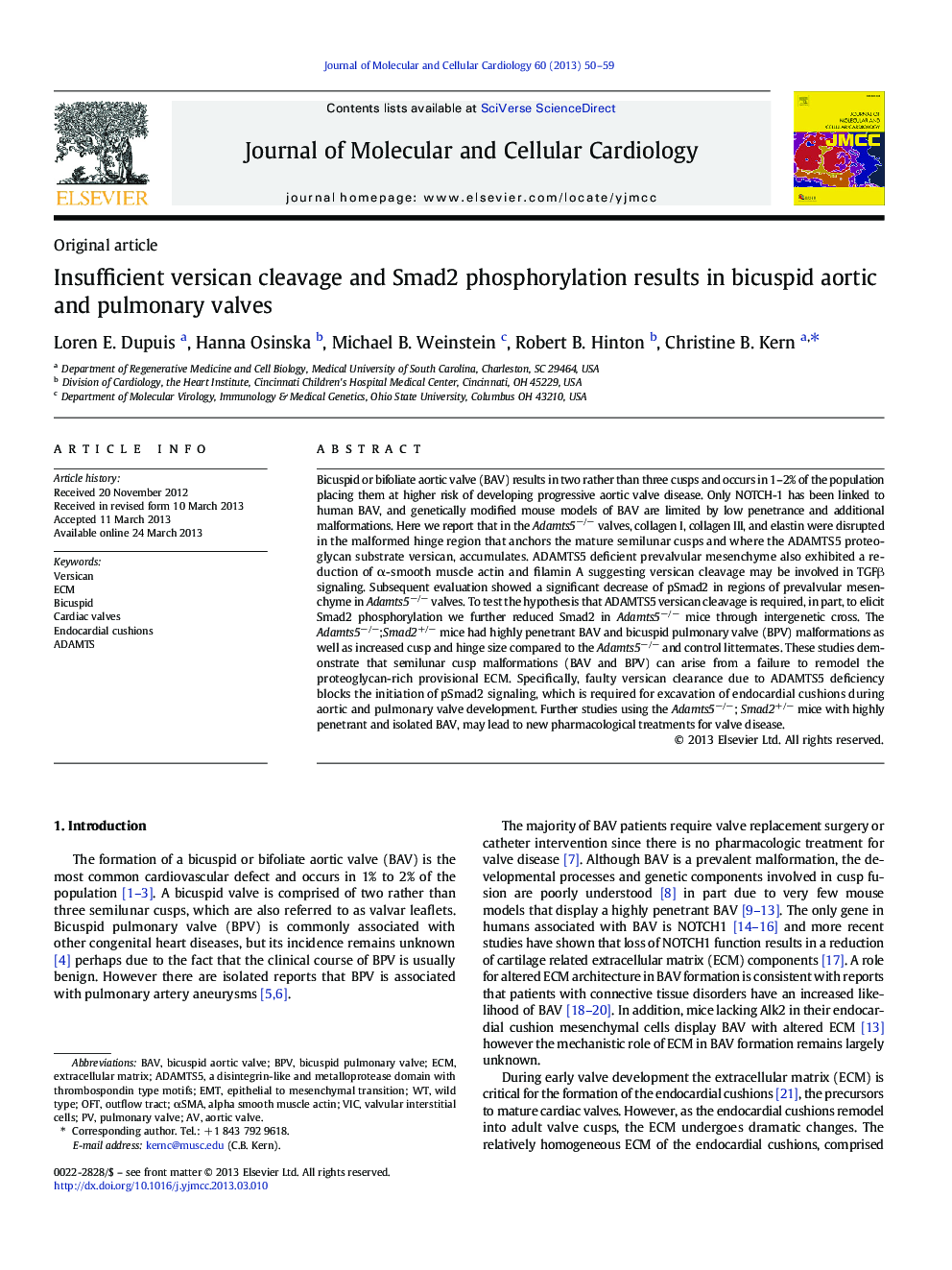| Article ID | Journal | Published Year | Pages | File Type |
|---|---|---|---|---|
| 8475198 | Journal of Molecular and Cellular Cardiology | 2013 | 10 Pages |
Abstract
Bicuspid or bifoliate aortic valve (BAV) results in two rather than three cusps and occurs in 1-2% of the population placing them at higher risk of developing progressive aortic valve disease. Only NOTCH-1 has been linked to human BAV, and genetically modified mouse models of BAV are limited by low penetrance and additional malformations. Here we report that in the Adamts5â/â valves, collagen I, collagen III, and elastin were disrupted in the malformed hinge region that anchors the mature semilunar cusps and where the ADAMTS5 proteoglycan substrate versican, accumulates. ADAMTS5 deficient prevalvular mesenchyme also exhibited a reduction of α-smooth muscle actin and filamin A suggesting versican cleavage may be involved in TGFβ signaling. Subsequent evaluation showed a significant decrease of pSmad2 in regions of prevalvular mesenchyme in Adamts5â/â valves. To test the hypothesis that ADAMTS5 versican cleavage is required, in part, to elicit Smad2 phosphorylation we further reduced Smad2 in Adamts5â/â mice through intergenetic cross. The Adamts5â/â;Smad2+/â mice had highly penetrant BAV and bicuspid pulmonary valve (BPV) malformations as well as increased cusp and hinge size compared to the Adamts5â/â and control littermates. These studies demonstrate that semilunar cusp malformations (BAV and BPV) can arise from a failure to remodel the proteoglycan-rich provisional ECM. Specifically, faulty versican clearance due to ADAMTS5 deficiency blocks the initiation of pSmad2 signaling, which is required for excavation of endocardial cushions during aortic and pulmonary valve development. Further studies using the Adamts5â/â; Smad2+/â mice with highly penetrant and isolated BAV, may lead to new pharmacological treatments for valve disease.
Keywords
Related Topics
Life Sciences
Biochemistry, Genetics and Molecular Biology
Cell Biology
Authors
Loren E. Dupuis, Hanna Osinska, Michael B. Weinstein, Robert B. Hinton, Christine B. Kern,
